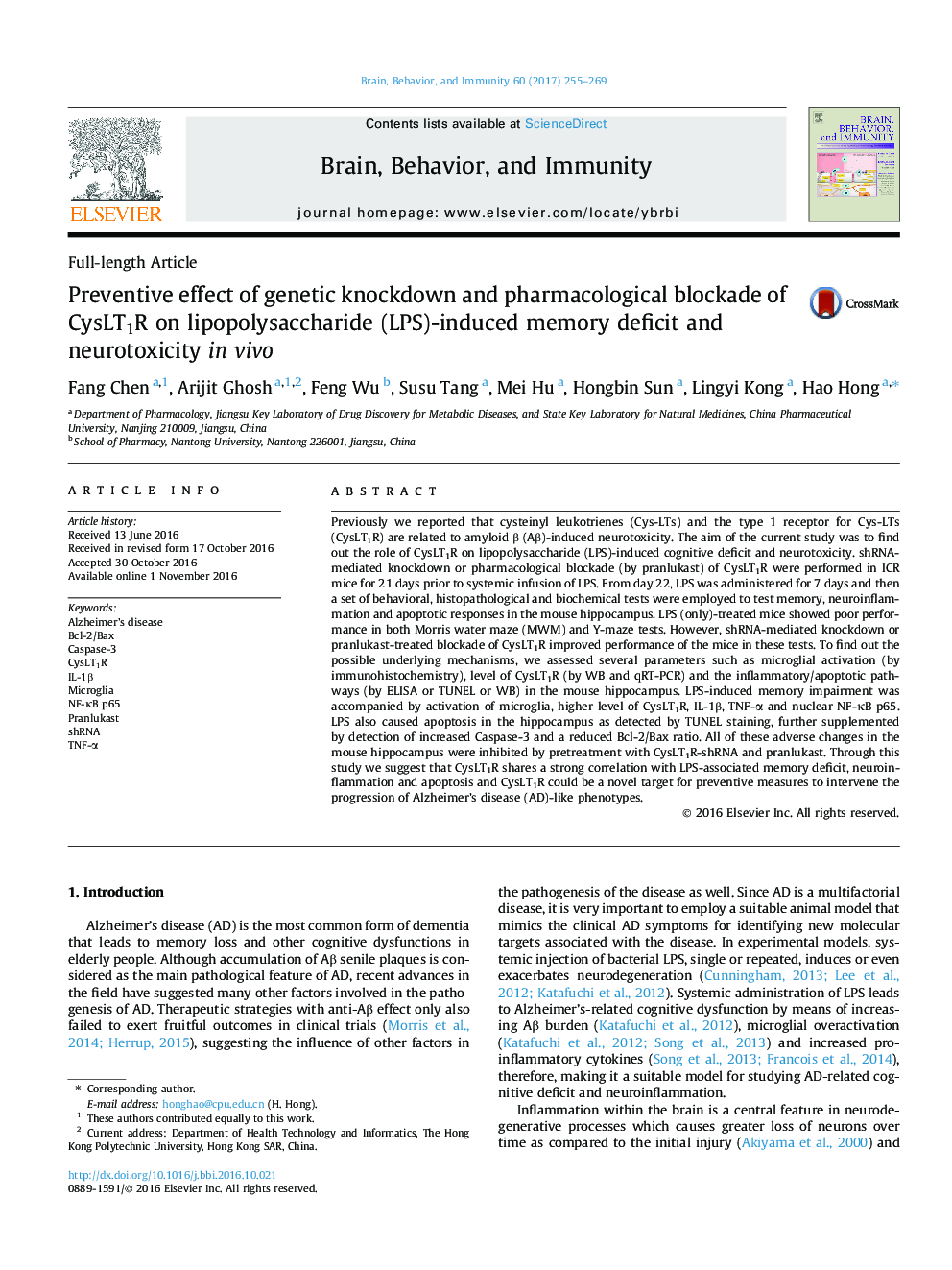| Article ID | Journal | Published Year | Pages | File Type |
|---|---|---|---|---|
| 5040754 | Brain, Behavior, and Immunity | 2017 | 15 Pages |
â¢LPS-induced memory deficit in mice is accompanied by hippocampal CysLT1R upregulation.â¢shRNA-mediated knockdown of CysLT1R prevents LPS-induced memory impairment.â¢Pranlukast, a CysLT1R antagonist, prevents neurotoxicity in mice induced by LPS.
Previously we reported that cysteinyl leukotrienes (Cys-LTs) and the type 1 receptor for Cys-LTs (CysLT1R) are related to amyloid β (Aβ)-induced neurotoxicity. The aim of the current study was to find out the role of CysLT1R on lipopolysaccharide (LPS)-induced cognitive deficit and neurotoxicity. shRNA-mediated knockdown or pharmacological blockade (by pranlukast) of CysLT1R were performed in ICR mice for 21 days prior to systemic infusion of LPS. From day 22, LPS was administered for 7 days and then a set of behavioral, histopathological and biochemical tests were employed to test memory, neuroinflammation and apoptotic responses in the mouse hippocampus. LPS (only)-treated mice showed poor performance in both Morris water maze (MWM) and Y-maze tests. However, shRNA-mediated knockdown or pranlukast-treated blockade of CysLT1R improved performance of the mice in these tests. To find out the possible underlying mechanisms, we assessed several parameters such as microglial activation (by immunohistochemistry), level of CysLT1R (by WB and qRT-PCR) and the inflammatory/apoptotic pathways (by ELISA or TUNEL or WB) in the mouse hippocampus. LPS-induced memory impairment was accompanied by activation of microglia, higher level of CysLT1R, IL-1β, TNF-α and nuclear NF-κB p65. LPS also caused apoptosis in the hippocampus as detected by TUNEL staining, further supplemented by detection of increased Caspase-3 and a reduced Bcl-2/Bax ratio. All of these adverse changes in the mouse hippocampus were inhibited by pretreatment with CysLT1R-shRNA and pranlukast. Through this study we suggest that CysLT1R shares a strong correlation with LPS-associated memory deficit, neuroinflammation and apoptosis and CysLT1R could be a novel target for preventive measures to intervene the progression of Alzheimer's disease (AD)-like phenotypes.
